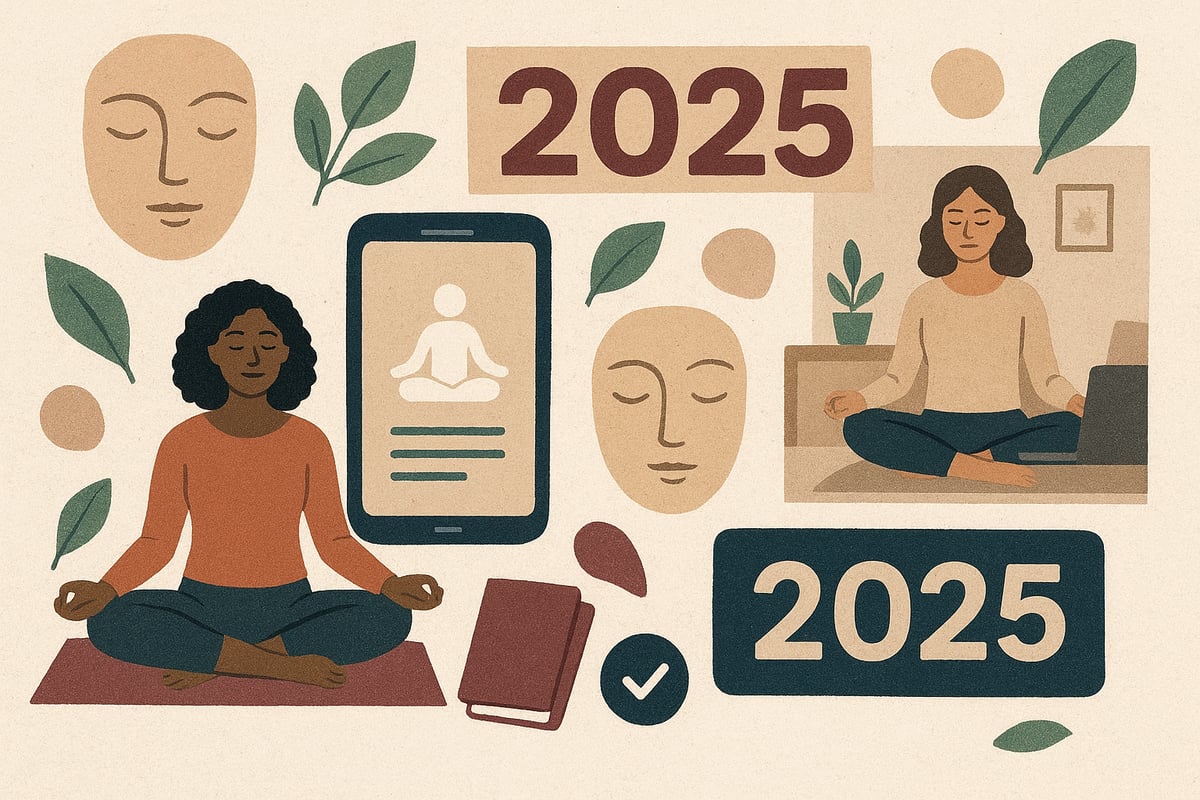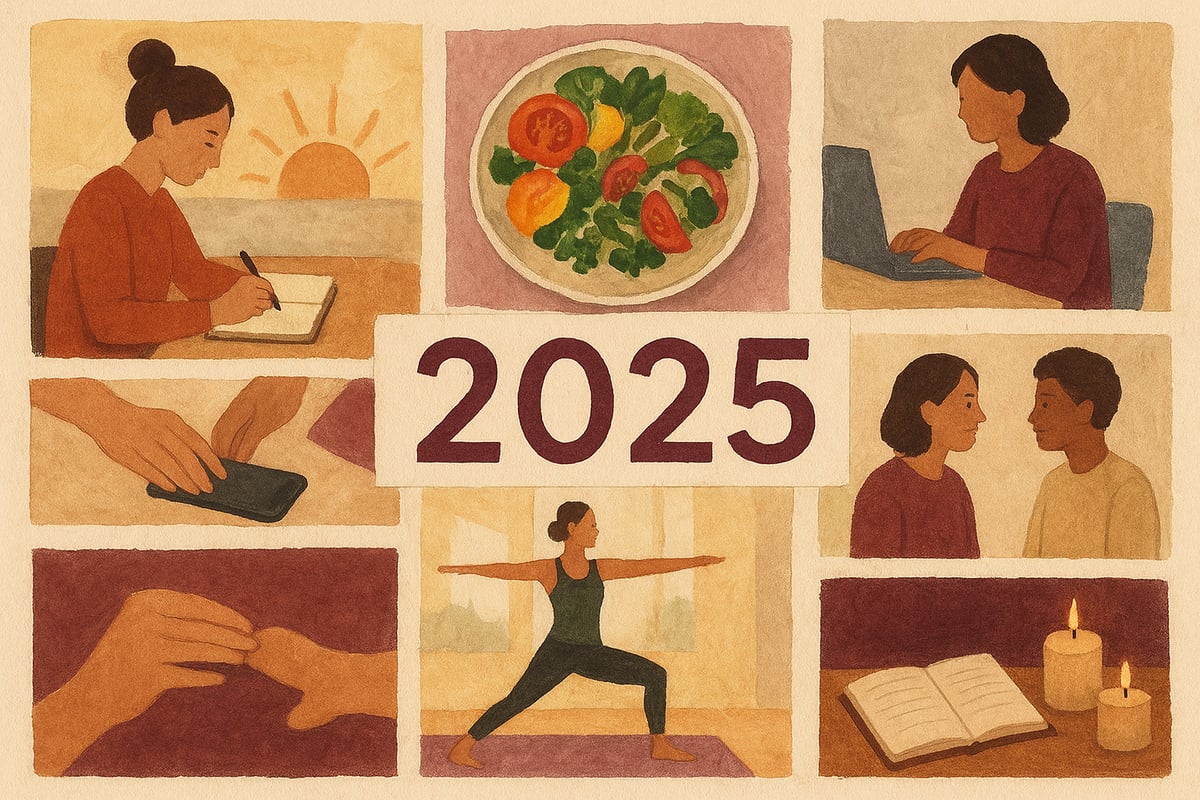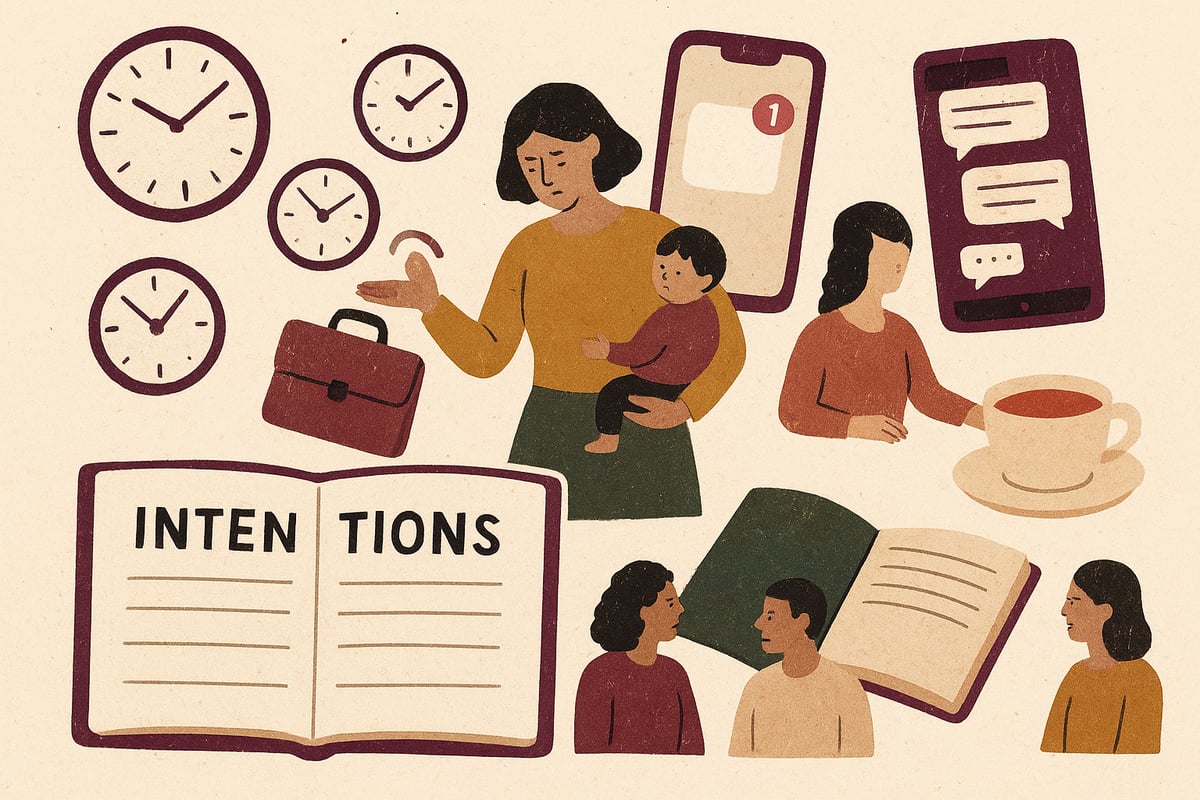7 Ways to Live Mindfully Every Day in 2025

In today’s fast-paced digital world, the need to live mindfully has never been greater. Many people feel overwhelmed by constant demands and distractions, searching for ways to reduce stress and regain focus. Mindfulness offers a proven path to greater awareness, resilience, and lasting joy, and its popularity continues to grow as we approach 2025. Imagine experiencing every day with clear intention, calm, and presence, no matter what life brings. In this article, discover seven powerful strategies to live mindfully every day in 2025, with practical steps you can start using right away.
The Importance of Mindful Living in 2025
Mindfulness is the practice of bringing one’s full attention to the present moment, observing thoughts, feelings, and sensations without judgment. In our era of constant connectivity, to live mindfully is not just a wellness trend, but a critical life skill. The pace of modern life, paired with a flood of digital distractions, makes it easy to operate on autopilot rather than with intention.
Recent years have seen explosive growth in mindfulness practices worldwide. For example, the number of Americans engaging in meditation has reached new highs. According to Meditation industry growth in the U.S., over 36 million Americans now practice meditation, fueling a $2.4 billion industry. Globally, wellness apps and mindfulness training programs are forecasted to continue rising as more people seek tools to live mindfully.
| Year | U.S. Meditation Practitioners | Wellness App Users (Global) |
|---|---|---|
| 2020 | 28 million | 200 million |
| 2025 | 36 million | 350 million |
The surge in remote work and social media has dramatically altered how we interact and focus. With endless notifications and multitasking, attention spans are shrinking and stress levels are rising. To live mindfully in this environment means deliberately setting boundaries with technology and choosing moments of presence over constant stimulation.
Scientific research consistently links mindfulness to a range of benefits:
- Reduced anxiety and chronic stress
- Improved focus and mental clarity
- Better emotional regulation and relationships
- Enhanced overall well-being
Despite these rewards, many hesitate to live mindfully due to misconceptions. Some believe mindfulness requires hours of meditation or is incompatible with busy schedules. Others may see it as a fleeting fad. In reality, mindfulness can be woven into ordinary activities, from eating to working, and even brief practices can yield meaningful results.
As we look to 2025, mindfulness aligns with major trends in health, productivity, and self-care. Organizations are integrating mindfulness programs to boost employee well-being and performance. Individuals are adopting daily rituals and mindful movement to create pockets of calm in hectic routines. Experts emphasize that to live mindfully is increasingly vital as our world grows more complex, offering both resilience and a renewed sense of joy.
Ultimately, to live mindfully in 2025 is to create space for intention, reflection, and authentic connection—even amidst rapid change.

7 Ways to Live Mindfully Every Day in 2025
Living in a world full of distractions, it is easy to lose sight of the present moment. To live mindfully in 2025, you need practical habits that anchor you in awareness, intention, and calm. Below are seven powerful ways to live mindfully every single day, helping you stay resilient, focused, and fulfilled as the pace of modern life continues to accelerate.

1. Start Each Day with Intentional Morning Rituals
How you begin your morning sets the tone for how you live mindfully throughout the day. Establishing intentional rituals brings clarity and focus. Start by setting a simple intention as soon as you wake up. This could be a phrase like “I will approach today with patience and curiosity.”
Incorporate mindful breathing for a few minutes. Slowly inhale, hold, and exhale, noticing the sensations. Journaling about what you are grateful for grounds your attention in the present. Even gentle stretching can awaken your body and mind, encouraging you to live mindfully from the first moments.
Research shows that people with regular morning practices report higher productivity and better mood all day. Savoring a warm cup of tea, repeating a daily affirmation, or sitting in silence can become meaningful rituals. The key is consistency and customization—find what helps you live mindfully and stick with it.
Technology can support your efforts. Meditation apps and digital journals help you track your growth, while reminders keep you on track. Resist the urge to check your phone or emails first thing. Instead, prioritize rituals that help you live mindfully and set a positive trajectory.
If you need extra support, consider exploring the Ease Mindful Living Collection, which offers tools designed to help you live mindfully every morning.
2. Practice Mindful Eating
Mindful eating is a cornerstone for those who aspire to live mindfully in 2025. Unlike habitual or distracted eating, mindful eating involves being fully present during meals. It means noticing flavors, textures, and the way food makes you feel.
The benefits are significant. When you live mindfully at the table, you may notice improved digestion and even better weight management. Studies show that mindful eaters enjoy their food more and develop a healthier relationship with meals.
To practice, start by removing distractions. Put away devices and turn off the TV. Take a deep breath before eating, and observe the colors and smells of your food. Chew slowly, savoring each bite. This not only helps you live mindfully but also allows your body to recognize fullness cues.
Bring mindfulness into meal preparation, too. Engage your senses as you chop, stir, and plate. Family meals can be a great chance to live mindfully together, sharing gratitude for the food and each other.
Try the raisin meditation: hold a raisin, observe it, smell it, and eat it slowly, noticing every sensation. This simple exercise can transform your approach to eating and help you live mindfully with every meal.
Busy schedules and social situations can make mindful eating challenging, but with practice, it becomes second nature. Remember, each meal is an opportunity to live mindfully and nourish your body and mind.
3. Integrate Mindfulness into Work and Productivity
The modern workplace, especially with remote and hybrid models, often pulls attention in many directions. To live mindfully at work, focus on single-tasking. Give your full attention to one task at a time, resisting the urge to multitask.
Schedule mindful breaks throughout your day. Stand up, stretch, and take a few deep breaths. This helps you reset and live mindfully, even during busy hours. Conscious emailing—reading and responding with intention—reduces stress and increases clarity.
Research links mindfulness at work to greater productivity and job satisfaction. Some companies now offer mindfulness programs, promoting a culture where employees live mindfully and support one another’s well-being.
To incorporate mindfulness, try setting a short intention before meetings. Pause, breathe, and then begin. Use digital calendars to block off time for focused work and mindful breaks. While technology can be distracting, it can also support your efforts if used wisely.
For example, mindfulness apps can prompt you to pause and recenter. According to Mindfulness app market statistics, the use of such tools is growing rapidly, reflecting a global shift toward living mindfully in professional environments.
Over time, these habits not only boost your career but also protect your mental health. By making small adjustments, you can live mindfully at work and bring a sense of presence and purpose to each task.
4. Embrace Digital Mindfulness and Tech Boundaries
In 2025, digital mindfulness is essential for anyone aiming to live mindfully. With constant notifications and endless scrolling, it is easy to lose track of the present. Setting healthy tech boundaries helps you reclaim focus and well-being.
Start by tracking your screen time. Many devices offer built-in tools for this purpose. Schedule device breaks during the day to help you live mindfully and avoid digital fatigue. Designate specific areas or times as tech-free zones, such as during meals or before bed.
Instead of reaching for your phone during downtime, consider mindful alternatives. Pick up a book, go for a nature walk, or try a creative hobby. These activities help you live mindfully and reconnect with yourself and your surroundings.
Digital wellness apps can support your journey. They offer reminders, guided meditations, and progress tracking to help you live mindfully with technology. Creating tech-free rituals, like a device-free hour before sleep, can improve your rest and reduce stress.
Obstacles like work demands or social expectations may arise. Communicate your boundaries clearly and ask for support when needed. Living mindfully in a digital world is challenging, but with intention and the right strategies, it is absolutely possible.
5. Cultivate Mindful Relationships and Communication
To live mindfully in 2025, pay attention to how you relate to others. Mindful relationships are built on empathy, listening, and genuine presence. When you practice active listening—focusing fully on the speaker—you deepen your connections.
Pause before responding, giving yourself a moment to reflect. Express gratitude regularly, acknowledging the positive impact others have on your life. These simple acts help you live mindfully in your interactions, whether with partners, family, or colleagues.
Studies show that mindful relationships improve both mental and physical health. Couples, families, and teams can benefit from rituals like shared gratitude moments or mindful check-ins. These practices foster trust and understanding.
Navigating conflict mindfully is equally important. Approach disagreements with curiosity rather than judgment. Set healthy boundaries and communicate them with kindness. Living mindfully means being present in both joyful and challenging moments.
Virtual communication presents unique challenges, but you can still live mindfully online. Turn off distractions during calls, make eye contact, and focus on the conversation. These habits create authentic connections, even from a distance.
By prioritizing presence and compassion, you will live mindfully and nurture relationships that uplift and sustain you.
6. Engage in Daily Mindful Movement
Movement is a powerful way to live mindfully, connecting body and mind. Practices like yoga, walking meditation, and tai chi encourage you to notice sensations, breath, and movement patterns.
The benefits are wide-ranging. Regular mindful movement reduces stress, lifts mood, and increases body awareness. Participation in mindful movement practices is on the rise, with more people seeking ways to live mindfully through physical activity.
You do not need a lot of time or a gym membership. Simple activities, such as a mindful walk, gentle stretches at your desk, or following a short online class, can help you live mindfully every day.
Micro-movements, like rolling your shoulders or taking a few mindful breaths while standing, bring awareness to your body throughout the day. Guided practices are widely available via apps or streaming platforms, making it easy to live mindfully on your own schedule.
Make movement joyful and non-judgmental. Focus on how you feel, not how you look. Choose activities that you enjoy and that suit your body’s needs. Mindful movement is for everyone, regardless of age or ability.
By approaching movement as an opportunity to live mindfully, you foster resilience and self-compassion.
7. Reflect and Reset with Evening Mindfulness Practices
Ending your day with intention is key to living mindfully in 2025. Evening rituals help you process experiences, release tension, and prepare for restful sleep. Guided meditation, reflective journaling, or a calming body scan can become anchors for your nightly routine.
Research links evening mindfulness with better sleep quality and overall well-being. As you reflect, ask yourself: What went well today? What challenged me? How did I live mindfully, and where can I improve?
Journaling prompts, such as “What am I grateful for tonight?” or “How did I handle stress today?” encourage self-awareness. Digital detox before bed is especially beneficial. Turn off screens, dim the lights, and create a peaceful environment to signal your body it is time to rest.
Making these practices sustainable means keeping them simple and enjoyable. Even five minutes of mindful reflection can make a significant difference. If you struggle with fatigue or a busy family routine, start small and build consistency over time.
By closing each day with mindful intention, you set the stage to live mindfully tomorrow and beyond.
Overcoming Common Challenges to Mindful Living
Adopting the intention to live mindfully is both rewarding and demanding. Many people struggle with obstacles such as lack of time, constant distractions, and skepticism about whether mindfulness is practical in their busy routines. Perfectionism can also make it difficult to start or maintain new habits, as some believe that mindfulness requires long, uninterrupted meditation sessions.
However, research shows that even brief moments of awareness can create meaningful change. For example, simply pausing for a few mindful breaths or jotting down a reflection in a journal can help you live mindfully, even during the busiest days. Tools like Guided Journals and Planners make it easier to build habits, track progress, and stay motivated, especially when time is limited.
Micro-mindfulness practices are a powerful way to live mindfully without overhauling your entire schedule. Try mindful handwashing, a minute of gratitude before meals, or a quick body scan at your desk. These small acts can add up, reinforcing the idea that mindfulness is accessible to everyone. According to meditation statistics and benefits, consistent, small practices are linked to reduced stress and improved well-being.
Support from others can also make a significant difference. Joining a group, finding an accountability partner, or simply sharing your journey with friends can help you stay resilient when challenges arise. Remember, patience and self-compassion are crucial as you learn to live mindfully. Experts agree that mindfulness is not about perfection but about returning to the present, again and again, as you build habits that support a calmer, more intentional life.

You’ve explored how mindful habits can help you show up with greater clarity and resilience every day, even in the midst of 2025’s digital pace. If you’re ready to put these strategies into practice and make mindful living a natural part of your routine, having the right tools can make all the difference. I recommend starting with a guided journal that encourages reflection and intention setting—it’s a simple yet powerful way to build self trust and confidence as you grow. Take the first step and Start your journey to clarity. Order the The Guided Clarity Journal for Confidence now.








Leave a comment